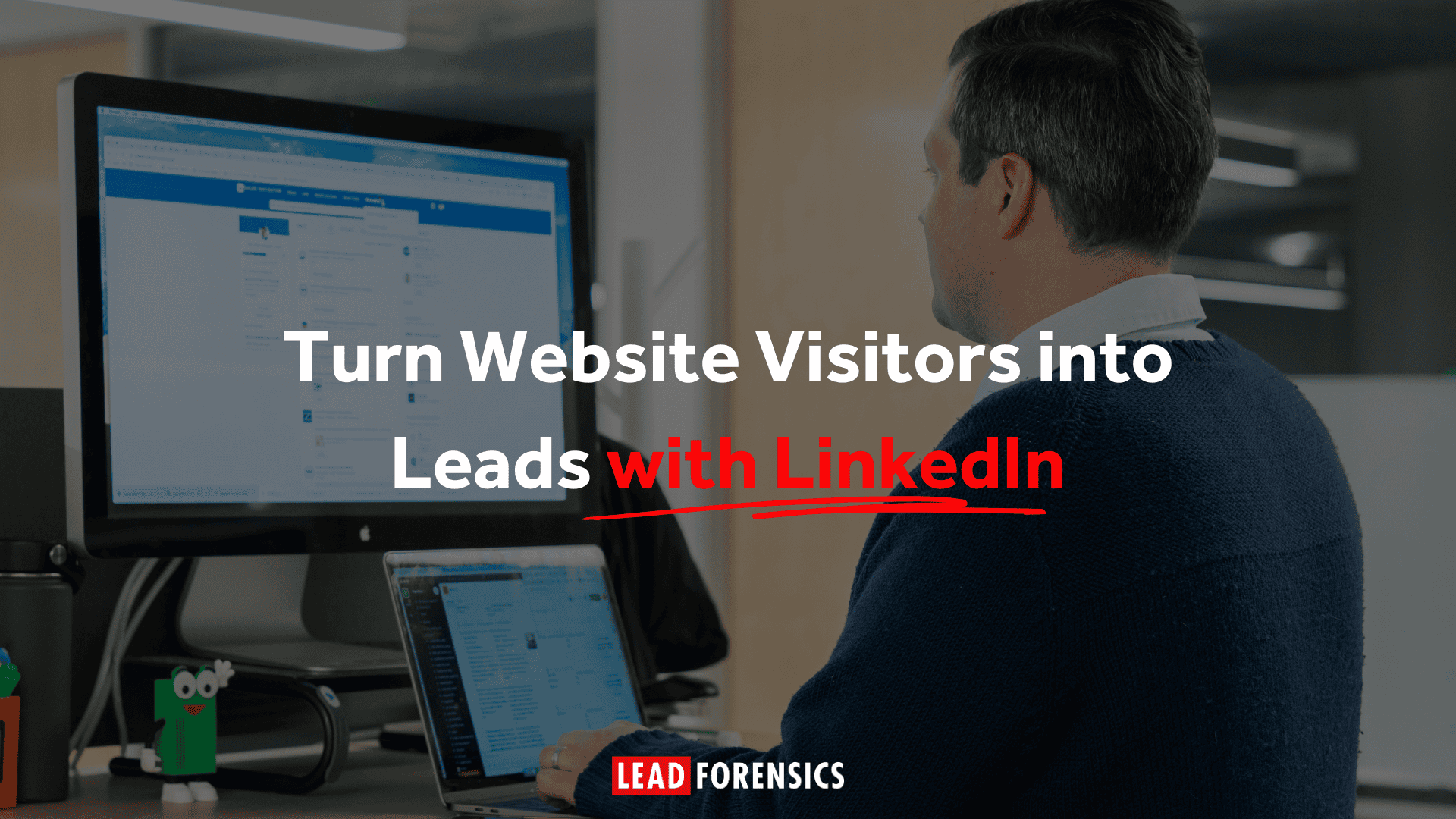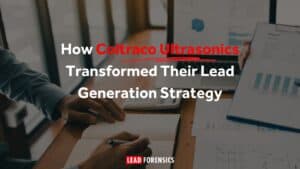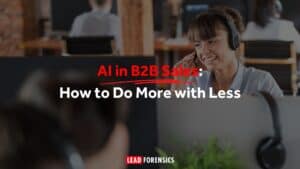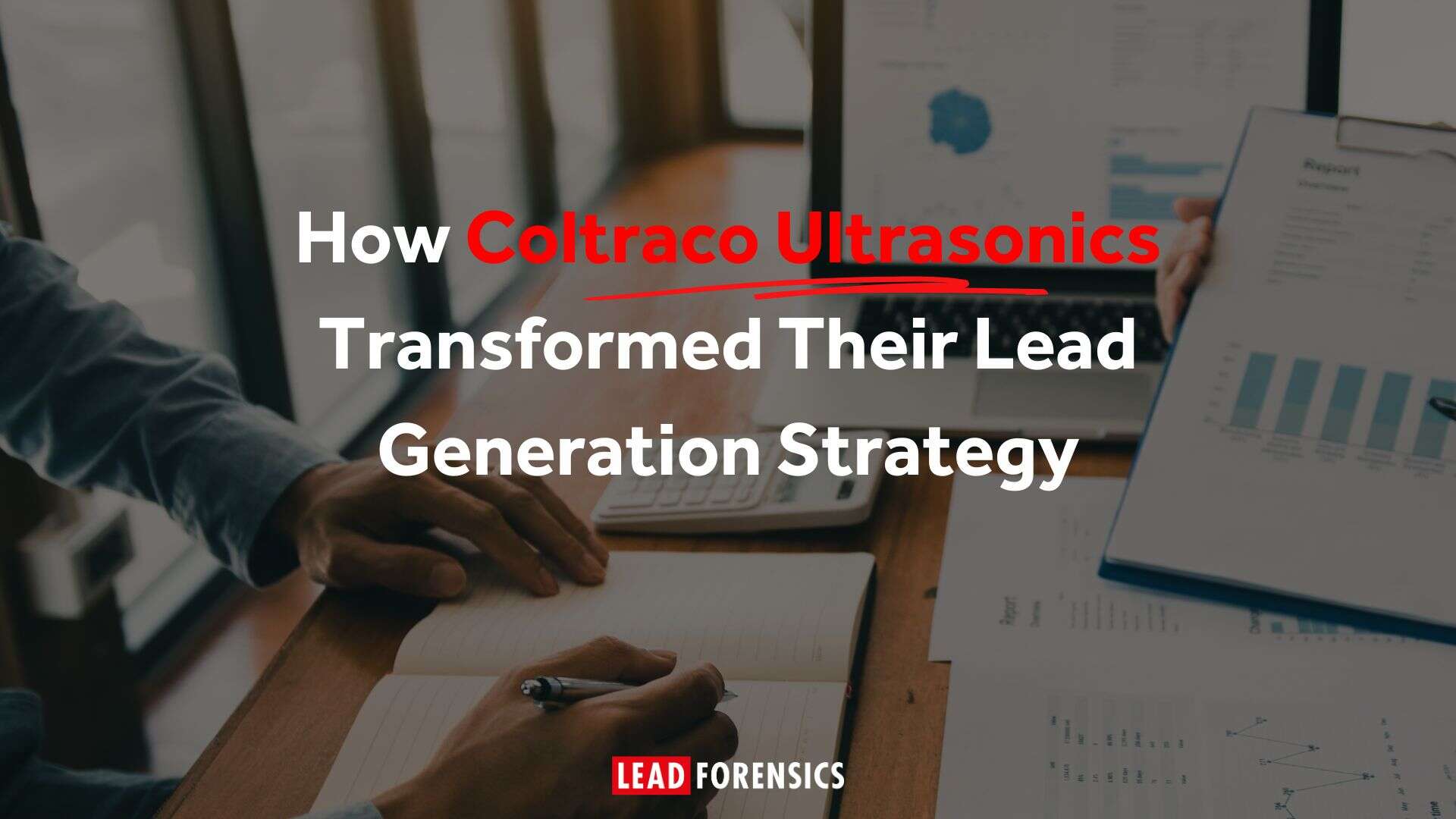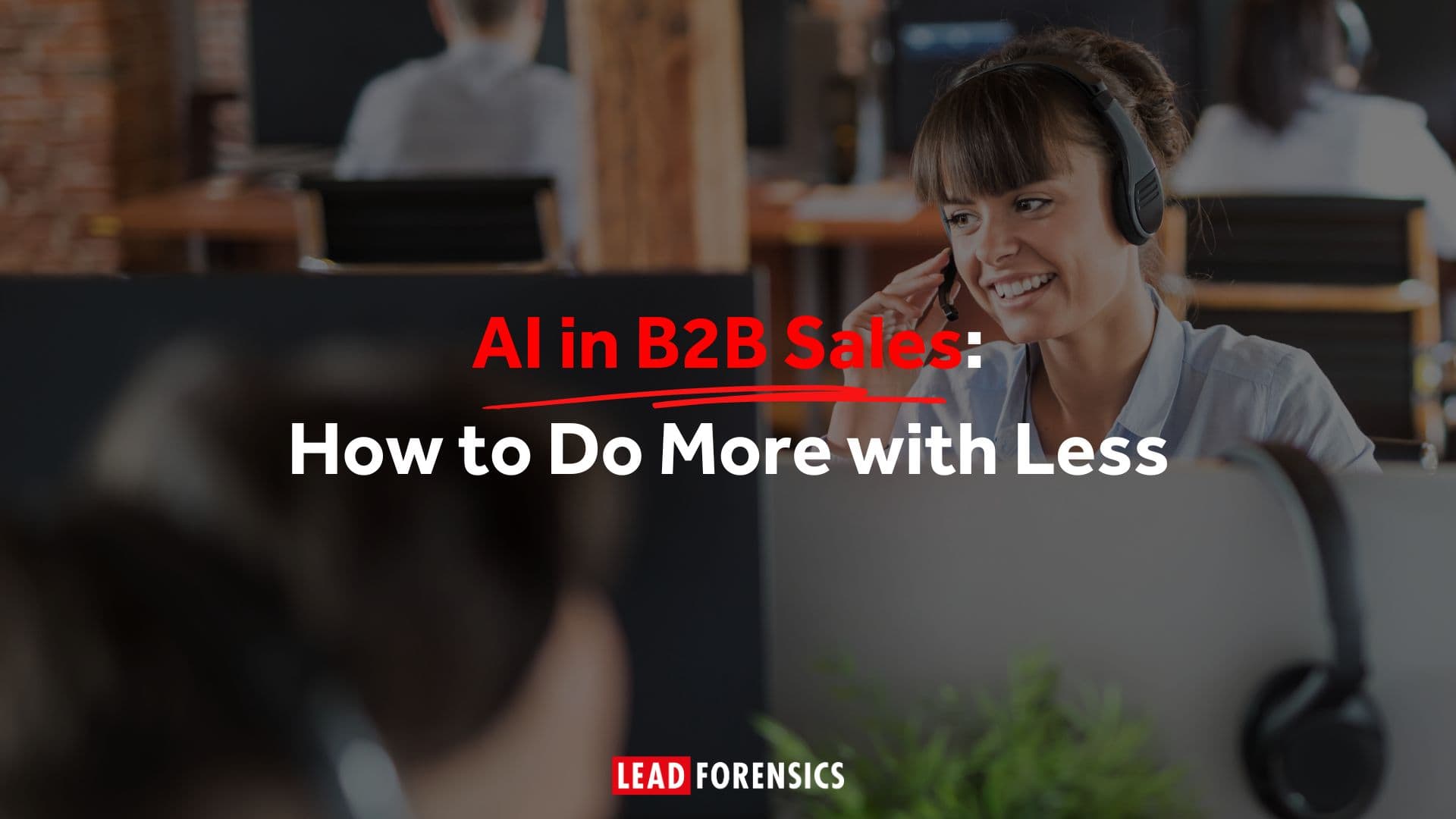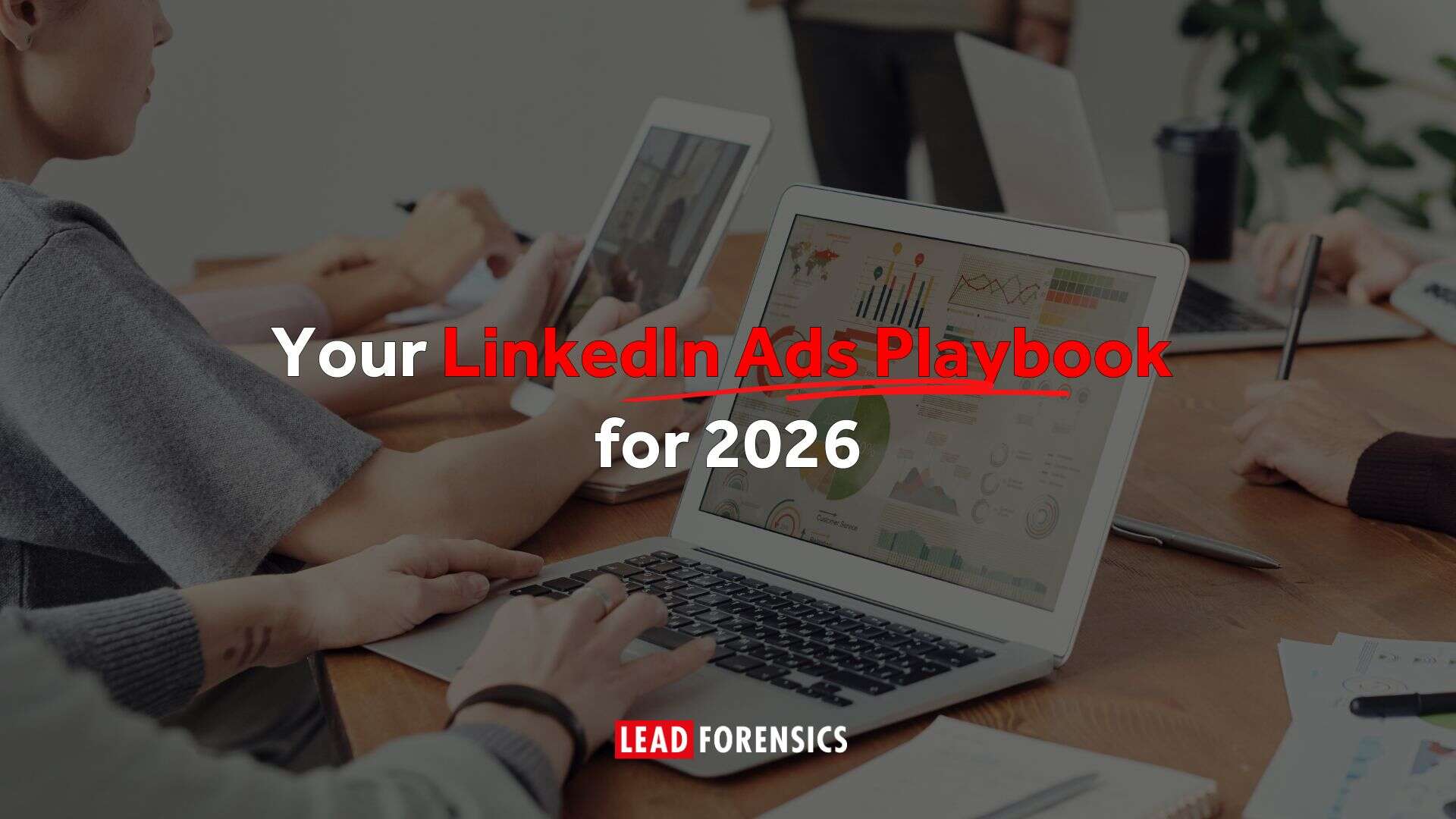One of the best ways to bridge the gap between driving traffic to your website and generating leads from it, is by using visitor identification to spot the companies that are looking at your website far before they become a lead. And when you combine this activity with the power of LinkedIn, you can unlock even more insights.
Who better to learn how to use LinkedIn to find more leads than Tom Happé, founder of Trueleads. Tom has a wealth of experience in social selling and understanding buyer intent to spot warm leads from websites, and shared his expertise in our webinar all about LinkedIn Strategies for B2B Website Visitors, which you can replay now – or read the summary below.
Start Where the Intent Is Highest
Marketing teams often chase the shiniest new tool, like third-party intent data or cold outreach platforms, without fully leveraging their hottest resource: current website traffic.
As Tom pointed out, your website is your digital storefront. If someone is browsing your pricing page or downloading a whitepaper, they’re not cold; they’re warm, curious, and possibly in-market. Because unlike cold data or broad intent signals from third-party platforms, these visitors have already found you, which puts them further along the buying journey.
“Looking at your website visitors is very targeted; you know that there’s an interest in what you’re doing because they’re looking at your your own site,” Tom explained.
Key takeaway: Before investing in cold outreach or external databases, build a process around identifying and engaging your existing website visitors.
Use LinkedIn to Humanize Outreach
LinkedIn is no longer just a recruitment tool, it’s a rich platform for B2B prospecting and relationship building. But as Tom explained, there’s a right way and a wrong way to engage.
The wrong way? Bland, templated connection messages and spammy follow-ups.
The right way? Intentional networking, personalized messaging, and leading with value. Your goal isn’t just to connect, it’s to create familiarity and build trust over time.
Practical advice for outreach on LinkedIn:
- Invest time in building a targeted first-degree network.
- Make your LinkedIn profile work for you. Position yourself as a helpful expert in your space.
- Map out at least seven touchpoints (likes, comments, DMs, content shares) for each key prospect.
When you treat LinkedIn like a networking event, not a sales booth, the results follow.
“You need to be careful with LinkedIn. If you get one of those seven touchpoints wrong, you’re going to burn your bridge. So, if you go straight in with a sales pitch after your connection message, you’re potentially going to scare them off forever,” said Tom.
Bridge the Gap Between Anonymous Visitors and Real People
One challenge marketing leaders face is turning anonymous website traffic into actionable leads. This is where platforms like Lead Forensics come into play, helping to identify the companies visiting your website. But it doesn’t stop there.
Tom recommends collaborating with your sales teams to define the Ideal Customer Profile (ICP). Once you know which types of companies are hitting your site, you can work together to identify decision-makers and influencers within those businesses — and connect with them directly on LinkedIn.
Tom’s advice:
- Use tools like Lead Forensics to identify company-level traffic.
- Match those accounts to LinkedIn profiles of your ideal personas.
- Reach out with context, not a canned pitch.
“I’m pretty intentional around who I add as a connection; it’s not not random. Once they’re a first degree connection, you have a number of options: you can send them a message, you can invite them to events, or they’ll see your posts and you can keep them updated… It’s a longer-term strategy: get them as a connection and then think of a plan of how you want to engage with them,” Tom said.
Sales and Marketing Must Align on Website Strategy
A key theme from the webinar was alignment. Marketers often focus on top-of-funnel activity, while sale reps can chase short-term wins. But Tom emphasized how powerful it is when both sides align around website visitor intelligence.
“When I was an enterprise sales rep, I used to look at the reports of which companies had looked at the website or downloaded a whitepaper and use that as my target prospect list. I actually closed some of the biggest deals in my career based on that, because I got to the opportunity way before the competition did,” Tom shared.
And according to research shared during the session, 84% of B2B buyers choose the first vendor they engage with in their buying journey.
The message is clear: act early, and act intentionally.
Your Personal Brand Matters, Especially for Sales Teams
Whether you’re in marketing or sales, your LinkedIn profile is a digital handshake. And according to Tom, it needs to reflect how you help your customers, not just your job title.
You can optimize your LinkedIn profile with the following tips:
- Make your headline benefit-led (“Helping B2B SaaS teams scale pipeline with LinkedIn”).
- Feature content relevant to your prospects’ pain points.
- Write clearly and avoid jargon to build trust.
Don’t overlook the role of personal branding for your sales team. When your reps look like thought leaders, they become magnets for engagement.
“If you position yourself as a thought leader, you’re sharing some interest and insights, you’re going to get more connections, and people are going to want to connect with you,” Tom suggested.
Don’t Wait for Perfection, Start Now
One of the most important pieces of advice Tom gave was simple: get started before you’re ready. Many businesses stall their prospecting efforts waiting for the “perfect” website or sales deck. But website visitors aren’t waiting.
“Even if your site only brings in a hundred or so visitors a week, that could turn into four of five leads and end up as one deal, which is still a great result,” Tom encouraged.
Your site doesn’t need to be perfect, your LinkedIn profile doesn’t need to be a masterpiece. Just get the basics in place and start connecting.
Close the Loop With Smart Social Content
One often-missed opportunity in B2B marketing is using social content to drive site traffic, and then measuring that traffic to identify leads.
Tom encourages linking back to specific landing pages or blogs in your posts. When you do this through a personal LinkedIn profile (which typically gets more engagement than a company page), you not only boost visibility but also close the attribution loop by tracking who clicks through.
“A killer strategy we use is to help people promote their website content on LinkedIn and then track which companies are actually landing on the website,” Tom said.
Bonus tip: Use social posts as a soft touchpoint. Offer insights, not pitches, and then use platforms like Lead Forensics to spot who lands on your site.
Not a Lead Forensics customer? Sign up for a free demo and find out which companies are engaging with your website (and clicking on your links shared on LinkedIn).


